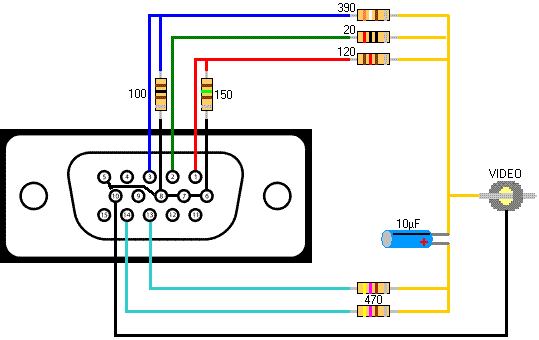deepthaw wrote on 2023-10-30, 12:52:
The fact that I can get such a technical answer to such an esoteric question within thirty minutes of posting it is why I love this place so much. Thank you for the info!
You're welcome! 🙂
And I agree, this is a fine place.
There are many skilled and experienced people here, most who know more than me.
Tiido, for example, I believe, knows a lot about the low level hardware things and sound chips.
Then there are also other fine souls who tinker with emulation and write demoscene prods..
If you're curious about hardware-assisted CGA compatibility (on ISA VGA cards), you can try out the mode utilities I've collected.
Re: Realtek realtalk, is it the best VGA for CGA? What is?
Good luck 🙂
PS: Many users from here are also on the vcfed.org forums.
Edit: I forgot to mention. A so called "sync combiner" circuit is used to generate a composite sync signal.
That's what CGA to SCART adapter cables use. In the simplest form, it's just a resistor/transistor.
To turn an RGB signal into composite signals (with colour) requires a bit more work, maybe.
Back in time, there were simple to use ICs available fir that. Transcoder ICs, so to say.
The French Nintendo NES had such an IC inside, it converted thw PAL video of the NES PPU to an RGB signal.
The reverse function is also possible.
But that's another story, maybe.
What we're looking for is getting a composite video from a VGA card (for CGA games), while ar same time generating artifacts colors for CGA titles.
But maybe we don't really need a true colours signal here.
The artifact colors work by using specific patterns that make the NTSC TV "see colours".
So maybe providing true CGA colours (RGB) isn't needed for all these games (mono composite may do).
What's important is that there's a colorburst carrier.
For coloring as such, a monochrome picture with those artifacts patterns (stripes) is primarily needed.
I mean, that's all what's available in 640x200 mode (CGA hi-res monochrome) and artifact colours do work here.
Speaking under correction, though.
"Time, it seems, doesn't flow. For some it's fast, for some it's slow.
In what to one race is no time at all, another race can rise and fall..." - The Minstrel
//My video channel//
